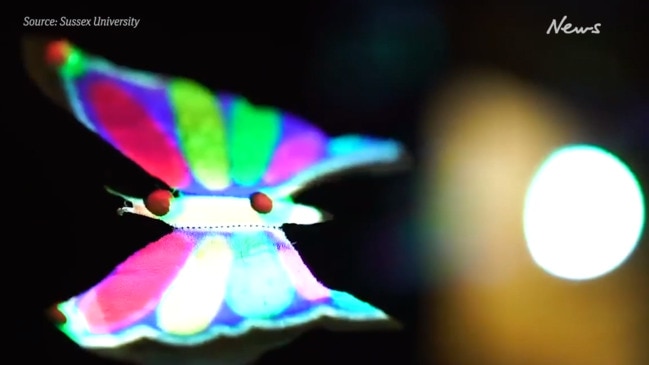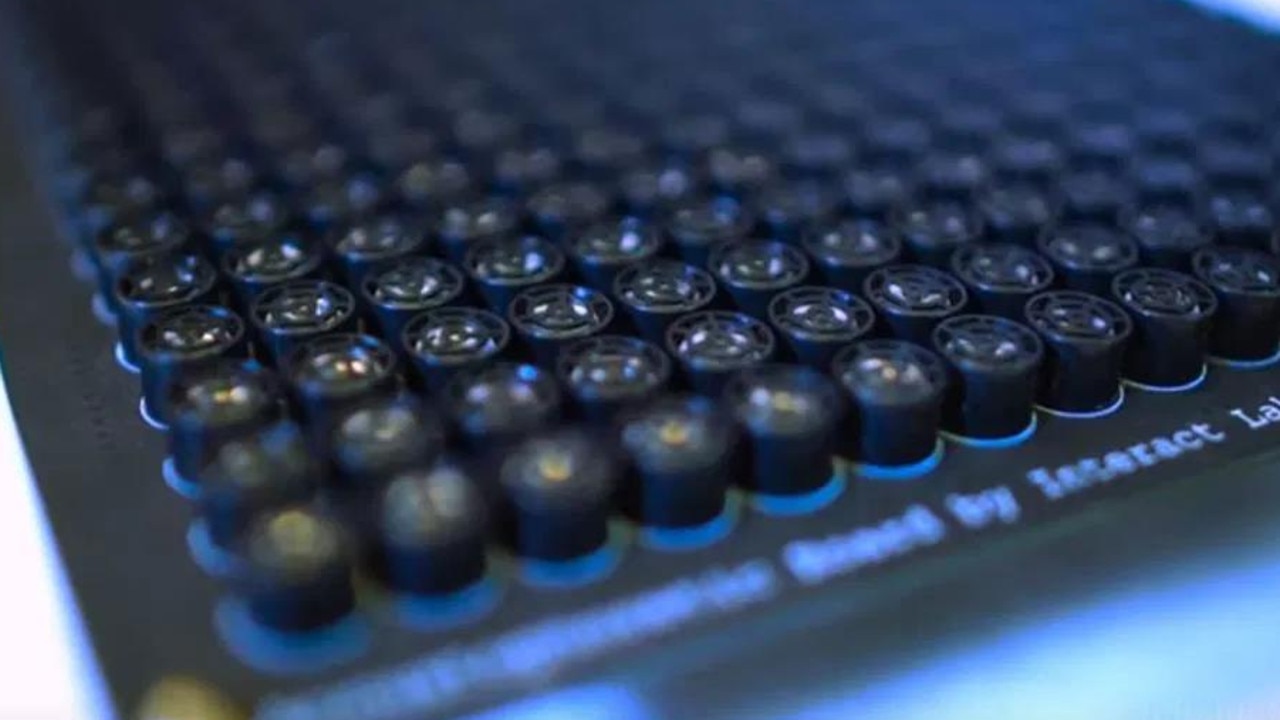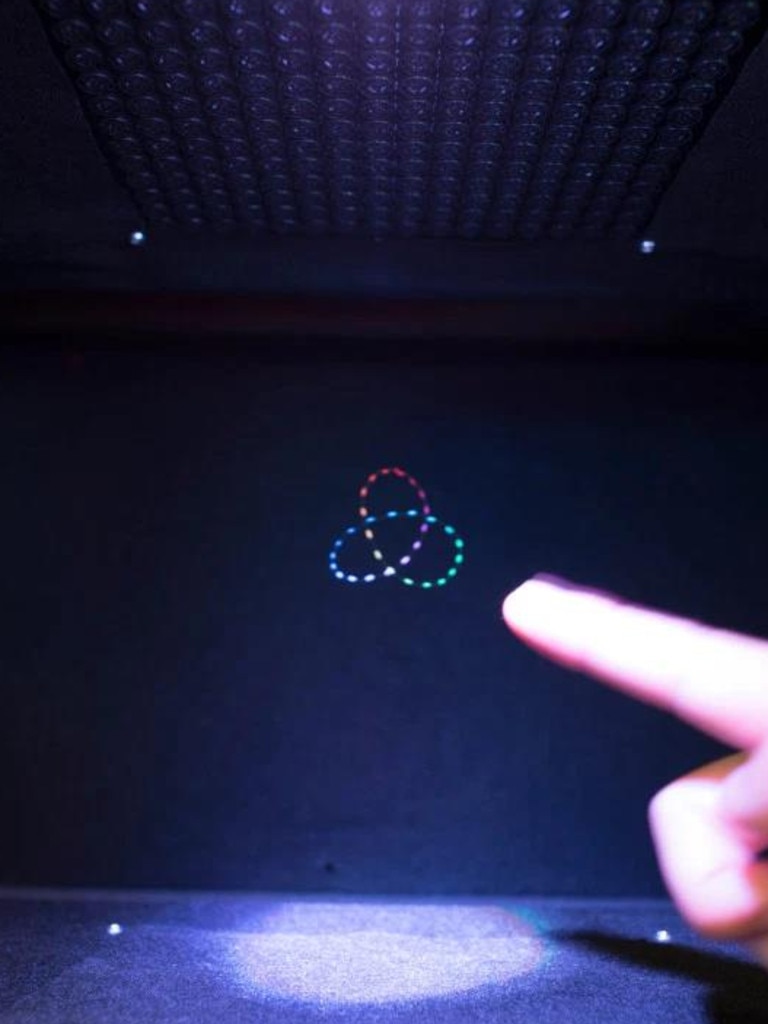Researchers invent hologram gadget to create virtual characters to talk and interact with us
Researchers have invented a way to create characters that could talk to and interact with us, using speakers that whiz a tiny bead around faster than our brains can track

READING LEVEL: GREEN
Star Wars-style hologram technology has finally made its way out of the famous space movies and onto Earth.
Researchers have created an incredible gadget that beams animated characters who seem to talk to and interact with onlookers.
Demonstrations showed a butterfly flapping its wings, a rotating planet Earth and a countdown spelled out using floating numbers.
Experts behind the device, from the University of Sussex, UK, said it could be used for entertainment.

“Let’s say you want to create a Harry Potter experience,” said researcher Sriram Subramanian.
“You could put your hand out to cast a spell and as you move your hand you could see a glowing ball growing in your palm, and we could have sound coming from it too.”
Unlike the floating messages seen in the Star Wars movies, the new technology isn’t actually a hologram.
Holograms use light from laser beams to make an image that looks like it is three dimensional.

This technology, however, creates animations using a 2mm-wide bead levitated* by tiny ultrasound* speakers that zip it around at high speed.
The bead moves at around 32kmh – so fast that it traces the shape of an object in less than a tenth of a second.
That’s too fast for the human brain to track, meaning to our eyes the “hologram” looks like a floating object.
Because the animation exists in a 3D space, it can be viewed from any angle.
LED lights add colours by beaming them onto the bead as it whips around.

According to the researchers, characters can be made to speak or make sound effects via the ultrasound speakers.
Users even seem to “feel” the objects in their hands.

Further research into the “multimodal* acoustic* trap display” could lead to the development of bigger and better devices, researchers said.
One future use for these devices would be a Skype*-like hologram messaging service.
“I believe that in the future, such displays will allow us to interact with our family and friends as if they are close by, so you can see, touch and hear them,” team member Ryuji Hirayama said.

This article was originally published in The Sun and is republished here with permission.
GLOSSARY
- levitated: rise or cause to rise in the air, usually in a story about magic
- ultrasound: waves of a type of energy that cause sound or other vibrations
- multimodal: more than one mode or way of something happening (such as light plus sound)
- acoustic: to do with sound
- Skype: internet messaging and communication service
EXTRA READING
Virtual Prime Minister beams in
Google’s virtual reality Uluru
Exploring Minecraft’s virtual Australian city
QUICK QUIZ
- What three things did the developers show in their demonstration?
- What is zipping around at high speed?
- What moves the thing that is zipping around at high speed?
- How does the object look coloured?
- What is the possible future use for the technology mentioned in the story?
LISTEN TO THIS STORY
CLASSROOM ACTIVITIES
1. How Would You Use It?
How do you think the new hologram technology could be used at your school?
Describe your idea, then create a poster encouraging schools to use it!
Time: allow 30 minutes to complete this activity
Curriculum Links: English, Science, Visual Communication Design
2. Extension
New technology always has benefits, but sometimes there can also be problems and disadvantages. What do you think could be some problems that this technology could cause, if people are not careful?
Time: allow 15 minutes to complete this activity.
Curriculum Links: English, Civics and Citizenship, Social and Personal Capability
VCOP ACTIVITY
Syl-la-ble Sleuth
A good way to find a syllable is to clap as you speak.
Search through the text. Make a list of all the adjectives you can find. Classify them into the number of syllables each word has.
For example: 2 syllables, 3 syllables, 4 syllables, 5 or more syllables.
When you’re writing your own text, remember that more syllables aren’t necessarily better.
HAVE YOUR SAY: Would you like a hologram pet or companion? What would it be and what would you do with it?
No one-word answers. Use full sentences to explain your thinking. No comments will be published until approved by editors.

